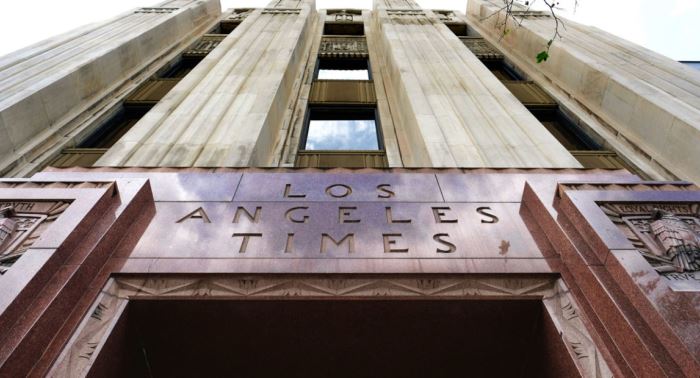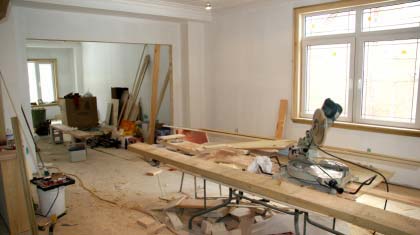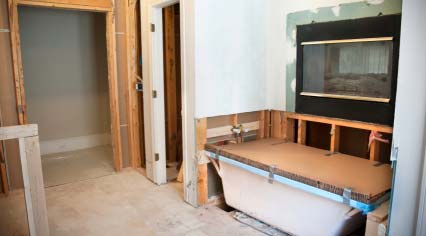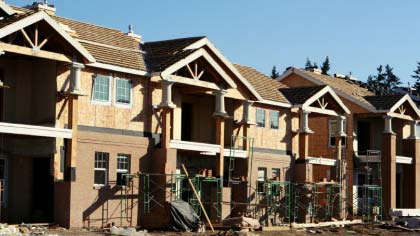Construction Loan Center
Loan is Trickier When Building Own Home

Los Angeles Times Article on Construction Loans
Los Angeles Times - Real Estate Section
Sunday, July 6, 2003
By Liz Pulliam Weston, Special to the Times
If you buy a home that somebody else built, you’ll have no trouble finding reams of financing information and lenders willing to help you.
If you want to build your own home, however, the road gets rockier. Construction loans aren’t as easy to find or understand as traditional 30−year mortgages. Not all lenders offer construction loans and those who do vary widely in the terms, rates, and fees they offer.
Few builders can do without a construction loan, however. Only about 20% of people who build houses pay cash, according to Census Bureau housing statistics.
If you are set on creating a home from scratch, you will need to know a few things about borrowing the money to start turning your dream into reality.
For starters, a construction loan is a short−term, interest−only loan typically designed to be replaced by a regular mortgage once the home is built. Regional banks, mortgage companies, and some national lenders, including Bank of America and Wells Fargo, offer these loans.
There are two types of construction loans:
The all−in−one loan also called the rollover or the construction to permanent loan, which automatically reverts to a standard mortgage after construction is completed.
The construction only loan, which comes due at the end of construction and must be paid off or replaced by a conventional mortgage.
Both have pluses. All−in−one loans have one set of fees and one closing, reducing the hassles for buyers, said mortgage broker Allen Bond of Palos Verdes Funding. Although many all−in−one programs convert the construction loan to an adjustable rate mortgage, some plans offer 15− or 30−year fixed−rate mortgages.
But, shopping separately gives consumers more choices, because they can select from the thousands of conventional mortgage loans available rather than being restricted to the mortgages offered by construction lenders.
This approach “lets the consumer wind up with the kind of loan they really want for the long term,” said Ginny Ferguson, vice president of the National Association of Mortgage Brokers.
In either case, the interest rate on the construction loan is typically fixed for the life of the loan, which is usually 12 months or less, although some stretch for 18 months.
The rate for people with good credit is usually the prime rate plus zero, one or two percentage points. You’ll typically pay 1% or 1.5% of the total loan amount in origination fees, Ferguson said, plus several thousand dollars in other fees to cover costs such as inspections so the lender can make sure the project is proceeding according to schedule, and title insurance, which tends to be trickier with new construction.
“They take a big chunk” in fees, said Warren Christensen, a Los Angeles homeowner who recently paid $17,000 to get an all−in−one construction loan that replaced his mortgage and provided him $135,000 for a major remodel and addition. “The beauty is that you’re not paying fees again when you roll over, but it’s still a lot of money.”
The higher cost reflects the risk of lending on an asset that hasn’t been built yet. There are also fewer construction lenders than there are mortgage lenders, so the market lacks the kind of competition that has helped drive down costs for regular home loans.
Christensen, a publisher who, with his architect wife, has built or remodeled several homes in Los Angeles, recommends shopping around to get the best deal.
“Go to a bank that does construction loans and a mortgage company,” Christensen said. “Go to three or four different places, because rates can vary greatly.”
Once you find the best deal, don’t expect to get your money all at once.Lenders typically dole out your funds in five to 10 “draws” timed to various stages of construction. These can include:
Grading the site and pouring the foundation.
Framing the house.
Installing heating, air conditioning, plumbing, and wiring.
Finishing the exterior.
Installing drywall or other interior surfaces.
Installing cabinets, fixtures, and trim.
Interior painting and other finishing touches.
The money is typically paid after each stage is completed, not before, although some lenders recently have loosened up on this standard, said mortgage expert Razmik Vartanian of Mark 1 Mortgage, by disbursing just enough money to cover deposits on supplies.
Construction loans also differ from mortgages in how lending companies determine how much you can borrow.
Conventional mortgage lenders base their loan maximums on the current value of the property and loan 80% to 90% of that value. Construction lenders, by contrast, may use the estimated future value of your property or base the loan on how much the project is expected to cost.
Suppose you find a lot for $100,000 and plan to spend $200,000 designing and building your castle.
The lender might require $5,000 in loan fees, plus interest and contingency reserves of about $20,000. The total loan would be for $260,000, which is 80% of $325,000.
Don’t expect to cut costs by acting as your own contractor unless you’ve had significant experience in construction. Most lenders insist that borrowers hire professional contractors.
I have done a few construction loans for borrowers that had experience building and acted as their own contractor,” said broker Bond. “The lender needs to have the confidence that they have the experience to handle the job.”
The best way to contain costs, home remodeler Christensen said, is to plan carefully and stick to your plan, since it’s so easy to get carried away. Suddenly you’re spending $1,000 on spa tub faucets and upgrading every surface in sight only to run out of money before construction is finished.
“It sounds funny since this is your dream home, but you really do have to rein in your desires,”
Christensen said. “You need a little self−censorship.”






